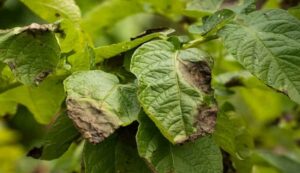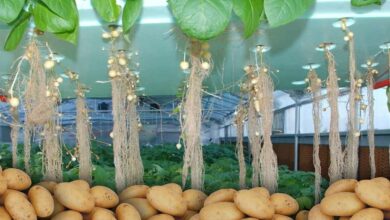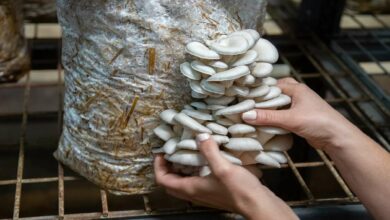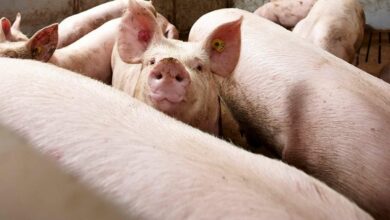Follow these tips to protect the potato crop from late blight disease, there will be good yield
Potato Crop: Phytophthora infestans, the pathogen that causes potato late blight, is very damaging and may result in catastrophic losses if left unchecked. Under ideal circumstances, the disease may completely destroy whole potato crops in a few days. It thrives in chilly, humid environments. The disease’s primary effects are.

Rapid Crop Destruction: In extreme situations, late bloom may reduce photosynthesis and result in yield losses of up to 100% by severely damaging leaves, stems, and tubers.
Post-Harvest Losses: Infected tubers often deteriorate while being stored, which raises financial losses even more.
Costlier Production: Farmers must spend a lot of money on fungicides and other management techniques, which raises production costs.
Impact on the Market: Prolonged outbreaks of late blight may cause supply shortages, which might raise prices and compromise food security.
About 40 to 45 percent of potato crops are lost due to pests, which include weeds, insects, and illnesses. This loss may sometimes reach 100%. Timely management of late blight disease is essential for the successful production of potatoes.
This illness destroyed the entire potato harvest, which led to the devastating famine that struck Ireland in 1945. The illness begins to spread from the plant’s leaves when there is less light and moisture in the air and rain or wet weather for many days. In four to five days, this disease may wipe off all of the plant’s green leaves. The bottom surfaces of the leaves develop white balls that eventually become brown and black. Potato tubers become smaller and produce less as a result of the illness of the leaves.
A temperature of 20 to 21 degrees Celsius is ideal for this. It is increased by humidity. Temperature and humidity are the two environmental variables that have the most effects on late blight development. At 90% relative humidity, sporangia develops on the undersides of leaves and diseased stems. Although sporulation, or spore generation, may take place at temperatures ranging from 3 to 26 °C (37 to 79 °F), the ideal range is 18 to 22 °C (64 to 72 °F). In order to cultivate potatoes and beans successfully, you must be aware of this illness, get the fungicides you’ll need for management beforehand, and apply them on schedule. Otherwise, you won’t have enough time to prepare once the disease strikes. The whole crop might be ruined in 4 to 5 days.
Controlling Late Blight
Integrated disease management techniques, such as the adoption of disease-resistant cultivars, prompt fungicide administration, and cultural measures including crop rotation and appropriate irrigation management, are required to stop losses brought on by late blight disease. To lessen this disease’s deadly consequences, early detection and proactive therapy are crucial.
Potato and tomato tubers or seeds should be treated by immersing them in a solution of 1.5 grams of metaloxil and mancozeb-mixed fungicide per liter of water for 30 minutes, then drying in the shade before being sown. This is recommended for farmers who have not yet planted potatoes.
A fungicide containing mancozeb at a dosage of 0.2 percent, or two grams of medication dissolved in one liter of water, is recommended for those who have not applied fungicide or whose fields have not had blight disease. Applying mancozeb won’t work after the illness symptoms start to show. Instead, spray 3 grams of cymoxanil mancozeb medication dissolved in one liter of water in the fields where the symptoms have begun to show. In a similar manner, 3 grams of Fenomedon mancozeb may be dissolved in 1 liter of water and sprayed. Another method for spraying is to dissolve 2.5 grams of a mixture of metalaxyl and mancozeb in one liter of water. For one acre, 800–1000 liters of medication solution will be needed. Take precisely all of the directions on the package while spraying.





